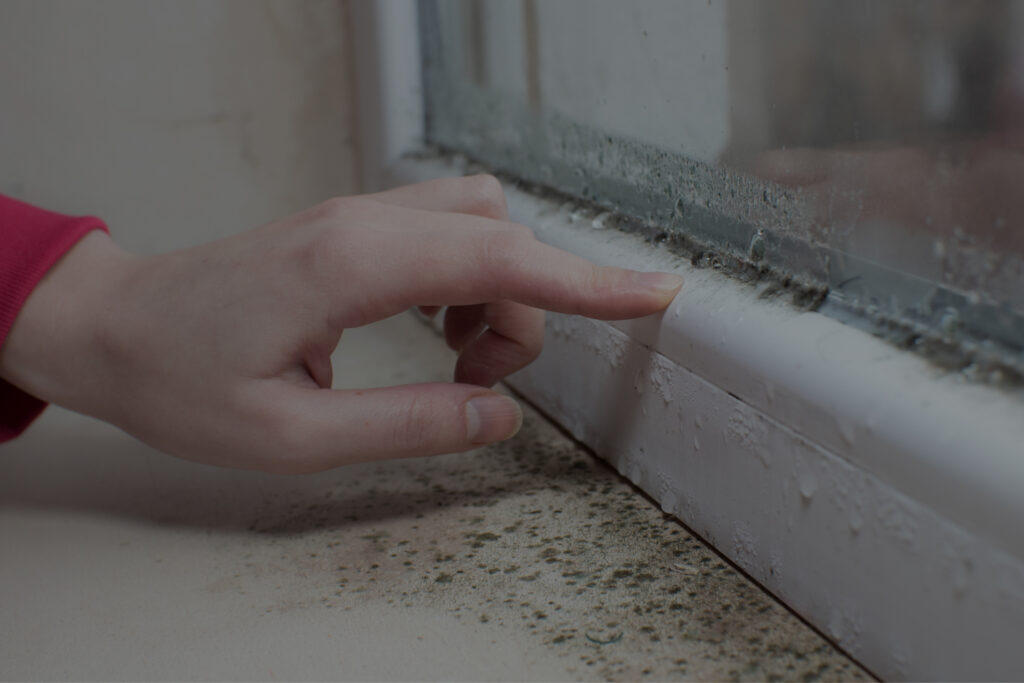
Black Mold
When it comes to mold and fungus, it can be quite difficult to identify and evaluate the danger it may pose as a threat to your health and home. However, the presence of black mold is an alarming concern of which everyone should be aware.
First off, What is Black Mold and How do we Identify it?
Stachybotrys chartarum, commonly referred to as “black mold” surfaces as colors from black to dark and deep greens hence where the phrase “black mold” came from. Stachybotrys chartarum is a slow growing mold that regularly overruns damp or water damaged buildings/ building material. Black mold grows and thrives on surfaces with high cellulose content, like most of our building materials e.g. fiberboard, drywall, gypsum board, wood, ceiling tile, wallpaper etc. Black mold tends to appear in clusters or patches of black spots, and will have a shiny/slimy texture when wet, and a powdery texture when dry. Black mold tends to give off an earthy, stale musty-like odor that is difficult to ignore. All molds spread through small reproductive cells, called spores. Airborne spores waft through the air until they land on a surface, if the environment is moist and cellulose rich, they will feed off the material, colonize and grow.
Black mold is very attracted to environments with lots of moisture and high humidity. This type of mold needs this type of environment to survive and with it, it will thrive! This is why many homes and buildings previously affected by floods, history of leaks in the roof, walls or plumbing, or any prior experience with any type of water damage are subjected to having black mold growth. Areas with regular exposure to moisture are usual suspects of this type of mold growth, for example, bathrooms, kitchens, basements etc.
Is Black Mold Dangerous?
What makes Stachybotrys chartarum a concern is its production of mycotoxins under certain conditions. Certain types of molds produce mycotoxins, secondary metabolites that can be harmful to health of humans and animals. Mycotoxins are tiny toxins that can affect an individuals health if inhaled or ingested. Exposure to high amounts of fungal spores may cause allergic reactions and symptoms such as watery eyes, runny nose, sneezing, itching, coughing, skin irritations etc. Whether fungal spores are alive or not, the allergens in and on them may remain allergenic to people. Constant exposure to high levels of mold can increase someone’s sensitivity, causing more severe allergic reactions. Not all black colored mold is “black mold”. There are many types of molds that are nontoxic and appear black in color. What makes black mold (or any toxic mold) unsafe is its derivatives. Exposure to mycotoxins can cause a variety of adverse health effects that could pose a threat to a one’s health that can vary in severity from person to person. The severity of health effects depends on several factors; whether the individual has a mold allergy, whether the black mold colony produces harmful mycotoxins, the dose of mycotoxins inhaled, and the duration of black mold exposure.
Prevention & Remediation
The presence of mold is almost always related to humidity and moisture. It is essential to locate and identify where that source of moisture is or where it is coming from. It is important to fix any rooms/areas with poor ventilation and to fix any appliances that may be leaking/ causing water damage. Ensuring the humidity levels of the home or building are under control will also be beneficial. Removal/ replacement of anything that has been saturated in water without proper drying (e.g carpet/ upholstery) will also need to take place to ensure a healthier environment. Without moisture and food, black mold as well as other mold types will be unable to colonize in your home/ building. However, that doesn’t mean mold/fungus goes away completely. Fungal spores will still travel and float through the air and lie on surfaces, waiting for the opportunity to grow again with the proper nutrients and environment. Hence, why it is very important to maintain a clean, healthy indoor environment.
All the best, stay healthy!
Marissa Kopacz
Laboratory Manager, Air Care Companies, Inc.







